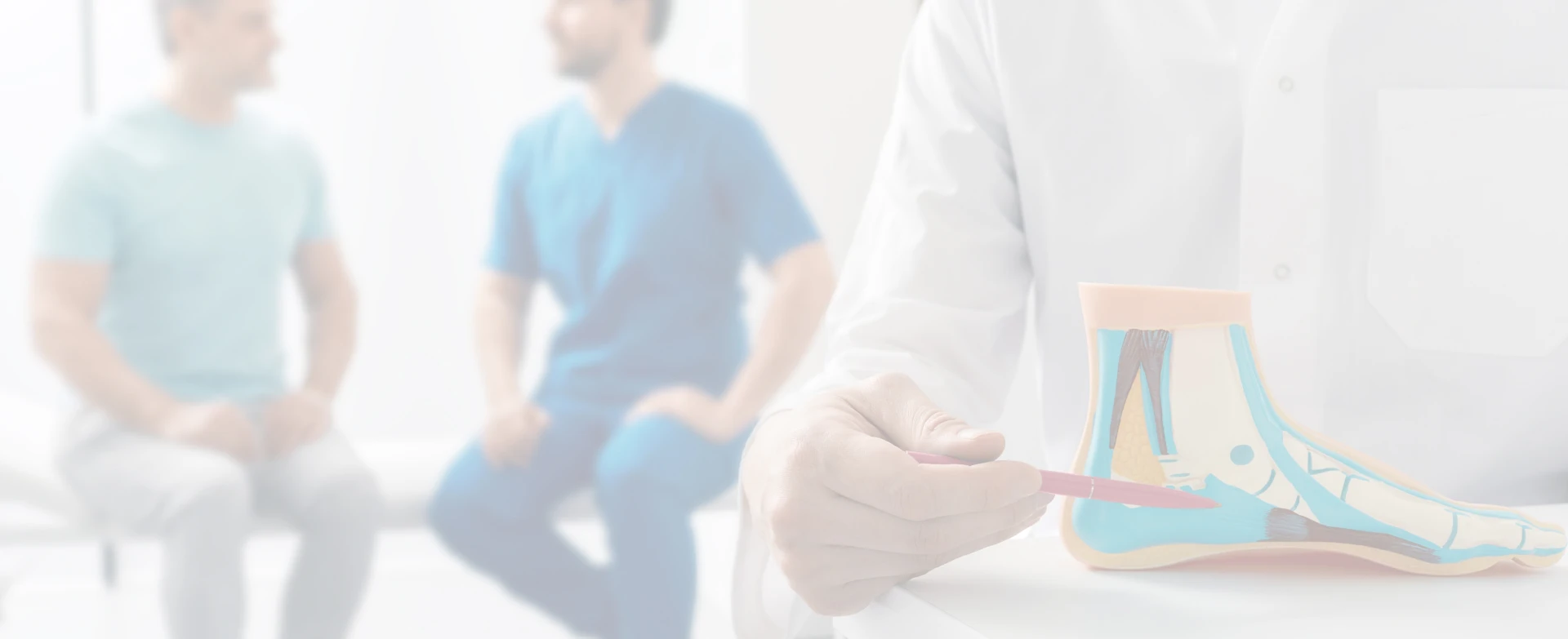
EUP
Ingrown toenails are not only painful, but they can also lead to other complications and even compromise your health. Many patients are surprised at just how painful an ingrown nail can be the first time they get one. They’re also surprised when we tell them what an untreated ingrown nail can lead to.
Here’s how to identify an ingrown nail, what causes it, how to treat it, and what happens if you don’t.
What is an ingrown nail?
Ingrown nails begin when the corner of a toenail begins to press into the softer parts of the skin at the nail’s edge. Ingrown nails continue to grow and press into the soft tissue around the nail, sometimes causing severe pain.
Typically, patients start to notice ingrown nails because of the pain, which will continue to worsen if not addressed. Ingrown nails can be hard to recognize or address on your own if you’re not familiar with them, because at first glance, it may appear that the nail is intact and everything looks normal.
Causes for ingrown toenails
Ingrown toenails have a few different causes. Commonly, ingrown nails result from cutting toenails too short, or not cutting them properly. Nails should be cut straight across and not curved. Curving the nail can cause the nail to be cut too short and begin growing into the nail bed. Nails should also not be pulled or ripped at the edges, as jagged nail edges can snag and embed in the soft skin at the edge of the toe.
Sometimes, ingrown nails can be caused by trauma to the toe. Dropping a heavy object on your foot can cause the nail edge to sink deeper into the toe and create conditions for ingrown nails. If you injure the nail, be mindful and monitor the nail for improper growth or new pain.
Recurring ingrown nails can be the result of unlucky genetics. If one of your immediate family members suffers from ingrown toenails, you might have a genetic predisposition and a higher risk of developing one yourself. Some toes will always require more attention and care than others for this reason. Your natural nail shape may make you more prone to nail complications.
Occasionally, fungal infections of the nail can make you more likely to develop an ingrown nail. Fungal infections often change the thickness and fragility of the nail. Thicker nails might be more likely to dig further into the skin of the nail bed, and frail nails might be more likely to tear and leave jagged edges on their own.
Improper footwear, like tight-fitting shoes, can also increase your risk for painful ingrown nails. When choosing shoes, avoid shoes with a toe box that is too narrow. Some shoes, like many types of high heels, not only put you at a higher risk of developing an ingrown nail but can also cause other foot health issues.
Similarly, if you play sports that involve your feet (like soccer), have trouble keeping your feet clean, or frequently have sweaty feet, you may be at increased risk of foot conditions like ingrown nails.
Contact us now to discuss your foot and ankle health needs.
Signs of ingrown toenail
The first and most obvious sign of an ingrown nail is the pain that occurs with one. At first, it might be difficult to pinpoint exactly what’s happening with your toes and why you’re experiencing pain.
Acute pain at the corner of the nail that worsens over time, with or without other symptoms, is the first sign of an ingrown toenail. Some ingrown nails will also create redness of the toe. Untreated ingrown nails that persist may also develop swelling, pus, or infection. These indicate a more severe issue that should be treated right away.
Do ingrown toenails go away on their own?
Ingrown toenails will almost never heal without some sort of intervention. Sometimes, there are ways to remedy ingrown nails at home, especially if they are recurrent. For example, if you know you are prone to ingrown nails because you’ve had one before, someone in your family gets them, or you have other issues with the health of your foot or nails, you should be on the lookout for ingrown nails. Detecting them early might mean that you can treat them at home with simple nail hygiene tools.
To do so, carefully lift the edge of the nail out of the pressure point into which it’s growing. It’s very likely that it is already very painful when you notice your ingrown nail. For this reason, it’s important to be very gentle when maneuvering the edge of the nail. It is also important not to crack the nail or create a more jagged edge, which can worsen the issue. If your nail fractures, peels apart in layers, tears easily, or is hardened due to fungus, you may need to consult a professional. Do not attempt this process on your own if you have diabetes or if the toe is swollen or infected.
If the nail is otherwise healthy and you feel comfortable doing so, you can use the small, hooked file within most standard nail clippers to gently lift the nail’s corner from the pressure point. Once you’ve done so, you should feel almost immediate relief from the pain. You can also try soaking your foot in a warm water bath and gently pulling the skin away from the nail to free the nail edge. However, this method might add to the pain if your toe is already very painful.
After lifting the edge away from the skin, it’s a good idea to keep the tool under the edge of the corner of the nail, as the nail is likely to spring back to its natural shape and find the groove back in the pressure point if you don’t. Holding the nail away from the skin can not only give you prolonged relief from the pain, but it can also help encourage the nail to grow away from its inward direction. Once you’ve developed an ingrown nail, you will likely have to revisit this practice daily (or more frequently) until the nail grows to an appropriate length.
What can happen if an ingrown nail isn’t treated
Leaving an ingrown nail untreated will only lead to more severe toe pain. In addition to the pain, it can also lead to ingrown toenail pus, an indication of a swollen toe infection. It can sometimes lead to deeper bone infections in very severe cases. It can also sometimes create issues with poor blood circulation in the foot, foot ulcers, or open sores. If you experience any of these symptoms, seek medical attention immediately.
Deeply ingrown nails often require an outpatient surgical procedure in which a podiatrist removes all or part of the nail. The podiatrist will numb your toe before the procedure, and the type of procedure will depend on the severity and recurrence of the ingrown nail.
Ingrown toenail doctors near me
If you suspect you have an ingrown toenail and want immediate relief, trust Essex Union to deliver quick, compassionate care and ingrown toenail treatments. We will assess your ingrown nail and walk you through your options before addressing your pain. Your trusted foot and toenail doctors can also discuss ways you can prevent future ingrown nails.
Ingrown nails are painful, we know! Don’t take any chances with home remedies if you have diabetes or suspect your toe could be infected. Our team knows exactly what to do to give you immediate relief, and we’re ready to listen.
Our advanced podiatry treatments can help relieve your foot and ankle issues.

